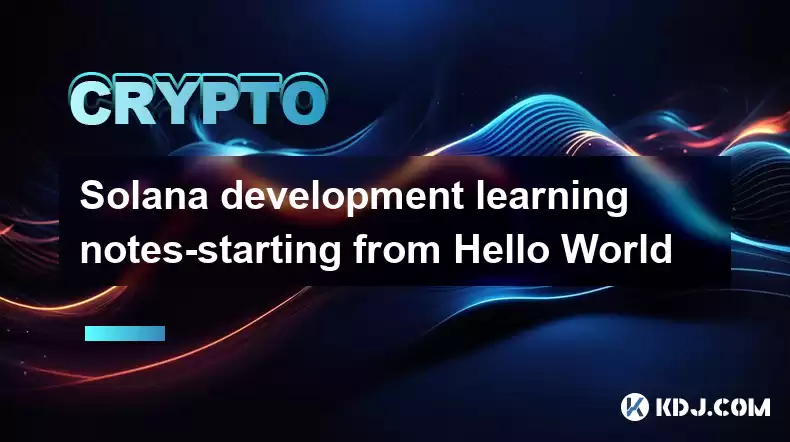-
 Bitcoin
Bitcoin $118800
-2.24% -
 Ethereum
Ethereum $4638
-1.08% -
 XRP
XRP $3.117
-5.42% -
 Tether USDt
Tether USDt $1.000
0.03% -
 BNB
BNB $842.6
-1.25% -
 Solana
Solana $195.3
-3.90% -
 USDC
USDC $0.9999
0.02% -
 Dogecoin
Dogecoin $0.2273
-7.27% -
 TRON
TRON $0.3606
0.62% -
 Cardano
Cardano $0.9319
5.60% -
 Chainlink
Chainlink $22.88
-3.66% -
 Hyperliquid
Hyperliquid $45.85
-1.58% -
 Sui
Sui $3.822
-5.16% -
 Stellar
Stellar $0.4276
-6.12% -
 Bitcoin Cash
Bitcoin Cash $594.2
-4.71% -
 Ethena USDe
Ethena USDe $1.000
-0.04% -
 Hedera
Hedera $0.2535
-4.61% -
 Avalanche
Avalanche $24.00
-4.86% -
 Litecoin
Litecoin $123.3
-6.62% -
 Toncoin
Toncoin $3.418
-1.73% -
 UNUS SED LEO
UNUS SED LEO $9.269
0.33% -
 Shiba Inu
Shiba Inu $0.00001307
-5.48% -
 Uniswap
Uniswap $11.04
-9.22% -
 Polkadot
Polkadot $4.047
-5.38% -
 OKB
OKB $101.3
-4.42% -
 Dai
Dai $0.9999
0.01% -
 Bitget Token
Bitget Token $4.612
-4.26% -
 Cronos
Cronos $0.1543
-8.52% -
 Aave
Aave $317.3
-3.42% -
 Ethena
Ethena $0.7275
-8.03%
Solana development learning notes-starting from Hello World
By following the comprehensive guide in this article, aspiring Solana developers can navigate the Solana Development Environment and build and deploy their own smart contracts on the Solana network.
Feb 06, 2025 at 02:13 am

Solana Development Learning Notes: A Comprehensive Guide from Hello World
Key Points:
- Step 1: Set up the Solana Development Environment
- Step 2: Writing a Basic Hello World Program
- Step 3: Understanding Accounts and Transactions
- Step 4: Implementing Smart Contracts on Solana
- Step 5: Deploying Smart Contracts to the Solana Network
- Step 6: Tools and Resources for Solana Development
- Step 7: Tips and Best Practices for Solana Developers
Step 1: Set Up the Solana Development Environment
- Install the Solana CLI (Command Line Interface).
- Set up a wallet using
solana-keygen newand secure it with a strong password. - Download and install Solana Anchor, a framework for smart contract development.
- Initialize a new Anchor project directory using the
anchor initcommand. - Start a Solana node locally for testing using
solana-test-validator.
Step 2: Writing a Basic Hello World Program
- Create a new file in the project directory with a
.rsextension (e.g.,hello_world.rs). - Implement the
mainfunction that defines the smart contract's logic. - Use the
msgobject to interact with the Solana blockchain and get the sender's public key. - Print a message using the
println!macro. - Compile and deploy the program to the local network using
anchor deploy.
Step 3: Understanding Accounts and Transactions
- Accounts are data structures that hold and modify state on the blockchain.
- Transactions are units of data transfer where accounts can be modified.
- Create an account for the Hello World program using
anchor create. - Use
anchor callto interact with the smart contract and call thehello_worldfunction.
Step 4: Implementing Smart Contracts on Solana
- Write custom smart contract logic using the Anchor framework.
- Define structs to represent data models and derive
Accountfor them. - Use Anchor's data serialization and deserialization tools.
- Create instructions to perform complex operations on the blockchain.
Step 5: Deploying Smart Contracts to the Solana Network
- Build the smart contract program using
anchor build. - Upload the program to the Solana network using
solana program deploy. - Interact with the deployed program using the Solana CLI and
anchor call.
Step 6: Tools and Resources for Solana Development
- Solana Code, the official documentation for Solana.
- Anchor, a framework for building and deploying smart contracts on Solana.
- Anchor Radar, a platform for monitoring and managing smart contracts.
- Phantom Wallet, a browser extension wallet for Solana.
- Wormhole, a bridge for transferring tokens between Solana and other blockchains.
Step 7: Tips and Best Practices for Solana Developers
- Use Anchor's READMEs for project setup and deployment.
- Leverage Anchor's testing tools and coverage reports.
- Securely manage your wallets and private keys.
- Optimize programs for gas efficiency and data integrity.
FAQs
Q: What are the benefits of developing on Solana?
- High transaction speed and low latency.
- Proof-of-History consensus mechanism for faster block finalization.
- Low transaction fees compared to other blockchains.
Q: What are the key features of Anchor?
- Framework for smart contract development and deployment.
- Data serialization and deserialization with minimal boilerplate code.
- Automatic account creation and management.
Q: What is the Solana testnet used for?
- Testing and debugging smart contracts.
- Deploying dApps in a real-world environment without the risk of losing funds.
Q: How can I get involved in the Solana community?
- Join the Solana Discord server and forums.
- Attend Solana conferences and meetups.
- Contribute to the Solana open-source community.
Disclaimer:info@kdj.com
The information provided is not trading advice. kdj.com does not assume any responsibility for any investments made based on the information provided in this article. Cryptocurrencies are highly volatile and it is highly recommended that you invest with caution after thorough research!
If you believe that the content used on this website infringes your copyright, please contact us immediately (info@kdj.com) and we will delete it promptly.
- Kazakhstan's Crypto Leap: Bitcoin ETF and Central Asia's Digital Finance Future
- 2025-08-13 12:45:19
- BlockDAG Presale Blazes Past $371M: Fundraising Frenzy Fuels Crypto Sensation
- 2025-08-13 13:05:21
- Meme Coins: Chasing the 2025 Surge – Which Will Moonshot?
- 2025-08-13 10:25:23
- Bitcoin's Wild Ride: Rally, Pullback, and What's Next
- 2025-08-13 10:25:23
- Bitcoin, Bitmax, and Institutional Demand: A New Era of Crypto Investment
- 2025-08-13 10:45:12
- Solana, ROAM, and Airdrops: What's the Buzz in 2025?
- 2025-08-13 11:35:13
Related knowledge

What is Ethereum’s Slashing mechanism and how to punish malicious behavior?
Feb 20,2025 at 03:08am
Key PointsOverview of slashingDifferent types of slashing in EthereumIncentives and consequences of slashingIdentifying and reporting slashed validato...

What is the verifier node of Ethereum and how to become a verifier?
Feb 19,2025 at 06:00pm
The Verifier Node of Ethereum: A Comprehensive GuideKey Points:What is a Verifier Node?How to Become a Verifier NodeResponsibilities and Rewards of a ...

What is Ethereum’s staking, and how to participate and earn money?
Feb 19,2025 at 04:37pm
Key Points:Understanding Ethereum's Staking MechanismSteps to Participate in StakingBenefits and Rewards of StakingSecurity and Risk ConsiderationsTec...

What is Ethereum’s DAO (Decentralized Autonomous Organization) and how does it work?
Feb 20,2025 at 03:12am
Key PointsDefinition and Structure of a DAOGovernance and Decision-Making in DAOsBenefits and Use Cases of DAOsChallenges and Limitations of DAOsWhat ...

What is Ethereum's multi-signature wallet and how to improve security?
Feb 20,2025 at 02:18pm
Key Points:Understanding the Concept of a Multi-Signature WalletBenefits and Drawbacks of Multisig WalletsRequirements for Setting Up a Multisig Walle...

What is Ethereum's oracle and how to provide data for smart contracts?
Feb 21,2025 at 01:30am
Key Points:Understanding the concept of oracles in EthereumExploring different types of oraclesDetailed guide on how to provide data for smart contrac...

What is Ethereum’s Slashing mechanism and how to punish malicious behavior?
Feb 20,2025 at 03:08am
Key PointsOverview of slashingDifferent types of slashing in EthereumIncentives and consequences of slashingIdentifying and reporting slashed validato...

What is the verifier node of Ethereum and how to become a verifier?
Feb 19,2025 at 06:00pm
The Verifier Node of Ethereum: A Comprehensive GuideKey Points:What is a Verifier Node?How to Become a Verifier NodeResponsibilities and Rewards of a ...

What is Ethereum’s staking, and how to participate and earn money?
Feb 19,2025 at 04:37pm
Key Points:Understanding Ethereum's Staking MechanismSteps to Participate in StakingBenefits and Rewards of StakingSecurity and Risk ConsiderationsTec...

What is Ethereum’s DAO (Decentralized Autonomous Organization) and how does it work?
Feb 20,2025 at 03:12am
Key PointsDefinition and Structure of a DAOGovernance and Decision-Making in DAOsBenefits and Use Cases of DAOsChallenges and Limitations of DAOsWhat ...

What is Ethereum's multi-signature wallet and how to improve security?
Feb 20,2025 at 02:18pm
Key Points:Understanding the Concept of a Multi-Signature WalletBenefits and Drawbacks of Multisig WalletsRequirements for Setting Up a Multisig Walle...

What is Ethereum's oracle and how to provide data for smart contracts?
Feb 21,2025 at 01:30am
Key Points:Understanding the concept of oracles in EthereumExploring different types of oraclesDetailed guide on how to provide data for smart contrac...
See all articles

























































































